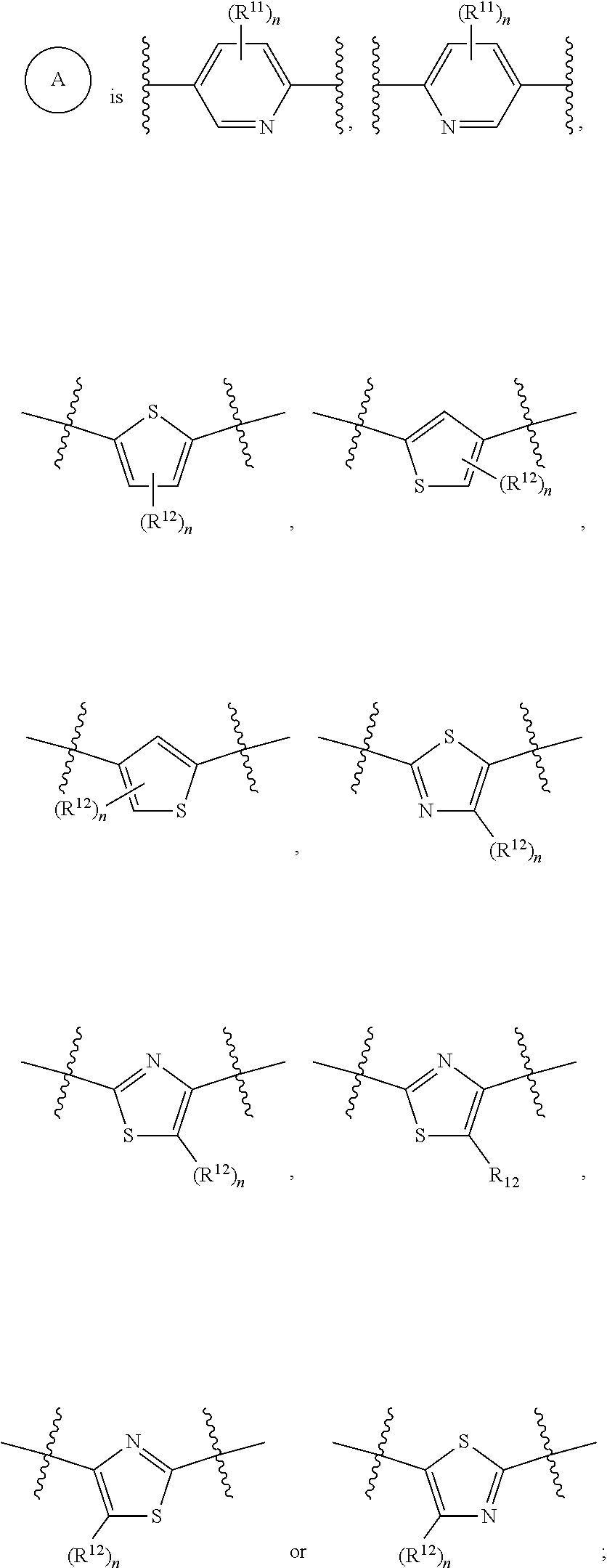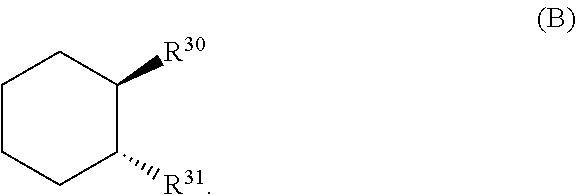Heteroaryl-substituted sulfonamide compounds and their use as sodium channel inhibitors
- Summary
- Abstract
- Description
- Claims
- Application Information
AI Technical Summary
Benefits of technology
Problems solved by technology
Method used
Image
Examples
example 1
Synthesis of (S)-5-((1-benzylpyrrolidin-3-yl)(methyl)amino)-6-methyl-N-(thiazol-4-yl)pyridine-2-sulfonamide formic acid salt
[0624]
Step 1. Preparation of 6-(benzylthio)-3-bromo-2-methylpyridine
[0625]
[0626]To a solution of benzyl mercaptan (3.69 g, 29.7 mmol) in anhydrous tetrahydrofuran (50 mL) was added sodium hydride (60% dispersion in mineral oil, 1.48 g, 37.1 mmol) in portions at 0° C. The reaction mixture was allowed to warm to ambient temperature and stirred for 1 hour. The reaction mixture was cooled to 0° C. and a solution of 3-bromo-6-fluoro-2-methylpyridine (4.70 g, 24.7 mmol) in anhydrous tetrahydrofuran (25 mL) was added dropwise. The reaction mixture was allowed to warm to ambient temperature and stirred for 12 hours. After addition of water (200 mL), the mixture was extracted with ethyl acetate (3×200 mL). The combined organic layers were washed with brine (50 mL), dried over anhydrous sodium sulfate, and filtered. Concentration of the filtrate in vacuo and purification...
example 2
Synthesis of (S)-5-((1-benzylpyrrolidin-3-yl)(methyl)amino)-4-methyl-N-(thiazol-4-yl)pyridine-2-sulfonamide
[0641]
Step 1. Preparation of 2-(benzylthio)-5-bromo-4-methylpyridine
[0642]
[0643]To a solution of benzyl mercaptan (2.88 g, 23.1 mmol) in anhydrous tetrahydrofuran (100 mL) was added sodium hydride (60% dispersion in mineral oil, 1.68 g, 42.1 mmol) and 5-bromo-2-fluoro-4-methyl-pyridine (4.00 g, 21.0 mmol) at 0° C. The reaction mixture was allowed to warm to ambient temperature and stirred for 12 hours. After addition of saturated ammonium chloride solution (20 mL) and water (100 mL), the reaction mixture was extracted with ethyl acetate (3×100 mL). The combined organic layers were washed with brine (3×50 mL), dried over anhydrous sodium sulfate, and filtered. Concentration of the filtrate under reduced pressure and purification of the residue by column chromatography, eluting with 1% of ethyl acetate in petroleum ether, afforded the title compound as colorless oil (6.0 g, 96% y...
example 3
Synthesis of (S)-5-((1-benzylpyrrolidin-3-yl)(methyl)amino)-N-(isothiazol-3-yl)-4-methylpyridine-2-sulfonamide trifluoroacetic acid salt
[0658]
Step 1. Preparation of tert-butyl isothiazol-3-ylcarbamate
[0659]
[0660]To a slurry of isothiazole-3-carboxylic acid (5.0 g, 38.7 mmol) in tert-butanol (194 mL) was added triethylamine (4.3 g, 42.6 mmol) followed by diphenylphosphoryl azide (11.9 g, 43.3 mmol). The reaction mixture was heated to reflux for 9 hours. Concentration under reduced pressure provided a residue which was dissolved in ethyl acetate (300 mL). The organic layer was washed with water (100 mL), 1 N sodium hydroxide solution (50 mL), water (100 mL), and brine (50 mL). The organic layer was dried over anhydrous magnesium sulfate, filtered, and the filtrate concentrated in vacuo. Purification of the residue by column chromatography, eluting with a gradient of 0 to 10% of ethyl acetate in heptane, provided the title compound as a colorless solid (6.16 g, 79% yield): 1H NMR (300 ...
PUM
| Property | Measurement | Unit |
|---|---|---|
| Volume | aaaaa | aaaaa |
| Molar density | aaaaa | aaaaa |
| Molar density | aaaaa | aaaaa |
Abstract
Description
Claims
Application Information
 Login to View More
Login to View More - R&D
- Intellectual Property
- Life Sciences
- Materials
- Tech Scout
- Unparalleled Data Quality
- Higher Quality Content
- 60% Fewer Hallucinations
Browse by: Latest US Patents, China's latest patents, Technical Efficacy Thesaurus, Application Domain, Technology Topic, Popular Technical Reports.
© 2025 PatSnap. All rights reserved.Legal|Privacy policy|Modern Slavery Act Transparency Statement|Sitemap|About US| Contact US: help@patsnap.com



